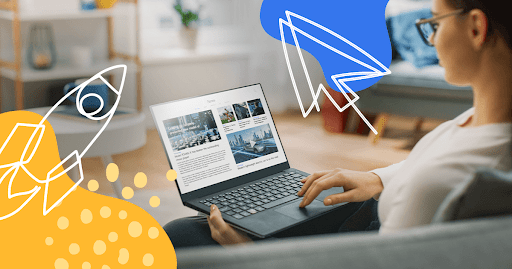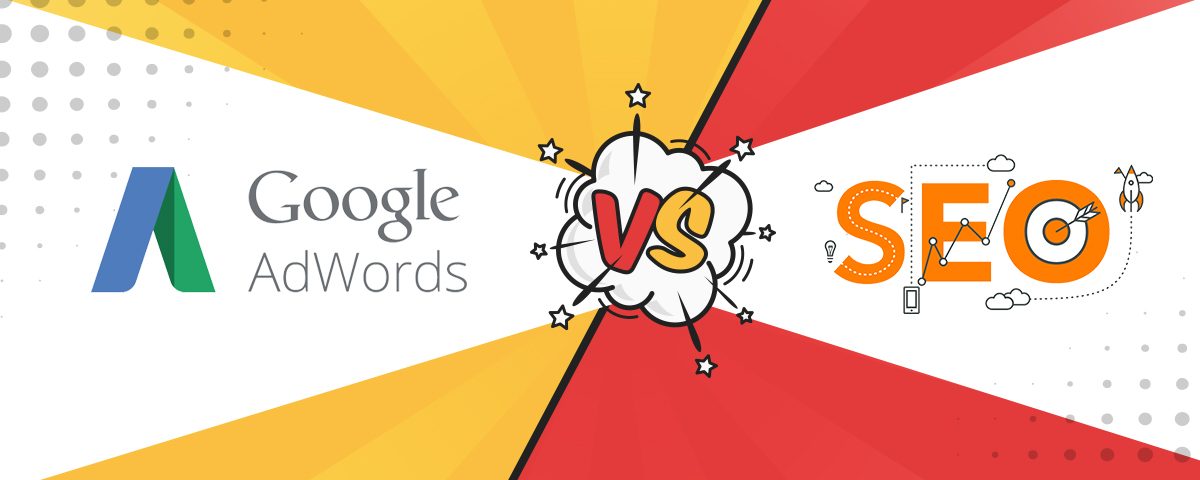Apr 30, 2025
Boost Sales & Revenue with Targeted B2B & B2C SEO Strategies

SEO requires more than high search engine rankings because it needs to develop actionable plans that support business objectives. SEO creates measurable effects on B2B and B2C companies by enhancing sales as well as revenue and attracting organic traffic to your business operations. The SEO approaches used for businesses operating between companies (B2B) differ significantly from the methods used for consumer-directed (B2C) businesses. Different strategic approaches need to be used for reaching target audiences effectively.
This article examines B2B and B2C SEO methods while showing their distinctions together with the significance of market-focused adaptation before explaining SEO-based business expansion strategies.
What is B2B? Full ROI optimization happens through Business-to-Business SEO services.
Business-to-Business entities make their products available for purchase to customers. Such transactions require comprehensive evaluation that takes more time before completion. B2B enterprises operate as software as a service providers together with consulting firms and manufacturing companies.
Examples of B2B Companies:
Software Providers: Salesforce, Slack, HubSpot
Consulting Firms: McKinsey & Company, Boston Consulting Group (BCG)
Wholesale Suppliers: Alibaba, Grainger
Professional Services: Deloitte, Accenture
B2B SEO Focus Areas:
Target Audience: The targeted business sector comprises CEOs alongside CTOs and marketing managers who function as well as procurement officers inside organizations.
Sales Process: The sales journey exists across multiple stages since it needs approval from multiple organizational officers.
Content Strategy: Educational content materials that demonstrate problem-solving capabilities will establish trust through detailed documents including whitepapers and case studies as well as industry reports.
Conversion Tactics: To generate leads for conversion purposes companies must implement gated content in addition to email nurturing and case study utilization.
What is B2C? The correct utilization of SEO techniques drives consumer purchase behavior.
Businesses in the B2C sector provide direct sales of their products or services to individual consumers. Businesses operating in the B2C sector include online retail and service companies which follow a shorter selling process compared to B2B organizations.
Examples of B2C Companies:
E-commerce Giants: Amazon, Etsy, Walmart
Subscription Services: Netflix, Spotify, Birchbox
Retail Brands: Nike, H&M, Sephora
B2C SEO Focus Areas:
Target Audience: The market segment for this plan consists of people who need personal products to resolve everyday needs or fulfill their personal desires.
Sales Process: The marketing process features rapid sales duration that depends on consumer reactions during promotional events.
Content Strategy: Companies in the B2C sector use product-based content together with reviews and comparison tools alongside emotional elements to connect with their clientele.
Conversion Tactics: Quick purchases emerge from promotional deals and discounted rates coupled with fast speed and optimized mobile performance.
Content Optimization to Drive Organic Traffic and Boost Sales
Content stands as the central element in any SEO approach no matter whether your business operates as B2B or B2C. You should create different content types because your audience demonstrates distinct requirements and purchase behaviors and search intentions. Within B2B SEO educational resources establish trust whereas B2C SEO implements quick decision-oriented content to generate immediate transactions.
B2B Content Optimization:
E-books & Whitepapers: Decision-makers seek detailed educational resources known as E-books & Whitepapers to stay informed.
Case Studies: Showcasing successful partnerships and solutions.
Webinars & Demos: Online web presentations and product demonstrations allow companies to deliver in-depth demonstrations of their products and services.
Long-Form Blog Posts: The content consists of lengthy blog posts that present industry knowledge along with business problem-solving solutions.
B2C Content Optimization:
Product Descriptions: The descriptions of products must present straightforward information that attracts buyers efficiently.
Review and Testimonial Pages: Building trust through customer feedback.
Comparisons: “Best products for X” type of content for decision-making.
How-To Guides: Guides that explain how to carry out tasks appeal to consumers who want quick answers.
Takeaway: Optimizing content for your audience’s intent is key. B2B focuses on educating and building trust, while B2C needs to spark impulse decisions and drive fast sales.
B2B vs. B2C: A Fundamental Difference in Search Intent
When people conduct searches they have specific purposes behind their queries. Audience intent patterns differ between marketing to business clients and marketing to consumer clients.
B2B Search Intent:
Informational: Businesses make many searches for solutions that solve complex problems.
Example: “How to improve team productivity with software.”
Transactional: Some business organizations occasionally search for tools or services as potential buying prospects.
Example: “Best CRM for large businesses.”
B2C Search Intent:
Transactional: People who use search engines look for products or service purchases as their main objective.
Example: “Buy leather jackets online.”
Navigational: Men and women search for specific brand names along with products they have encountered before.
Example: “Nike Air Max 2023 sale near me.”
Takeaway:
B2B SEO focuses more on informational content, whereas B2C SEO revolves around transactional content aimed at immediate purchases.
Link Building Strategies: Building Authority vs. Buzz
The foundation of both B2B and B2C SEO depends on backlinks yet the link-building objectives diverge according to the business model.
B2B Link Building:
Web searches for B2B SEO should target business publications together with industry blogs and professional organizations websites.
Present your content through influential industry residents who can deliver quality backlinks to you.
Company experts can use trusted industry platforms to publish guest content and carry out informative case studies for industry validation.
B2C Link Building:
Leverage consumer-focused blogs, product review websites, and social media influencers.
Produce viral website content which includes infographics and notable posts and interesting videos.
The acquisition of backlinks from both popular e-commerce platforms and consumer networks should be pursued.
Takeaway:
B2B link building aims to establish authority, while B2C link building focuses on gaining visibility through high-engagement content.
User Experience & Mobile Optimization for Increased Conversions
The provision of optimized UX alongside mobile-friendly design benefits every business in B2B and B2C sectors. The degree of focus changes according to whom the business targets.
B2B Mobile Optimization:
Professional users need easy-to-read content on your web page because they might view it while attending meetings or traveling away from their regular desks.
The website should use responsive design to maintain access across all tablets along with mobile devices.
The contact forms and lead generation system should contain simplified features that work well on mobile devices.
B2C Mobile Optimization:
Your business must strive for smooth checkout experience and quick page loads since impulsive buyers need this for online success.
Proper navigation streamlining enables simple mobile website exploration for quick consumer usage.
Purchase rates will increase and the number of customers leaving website pages will decrease when products are presented through mobile-friendly catalogs that load quickly.
Takeaway:
Both business models require strong mobile optimization, but B2C companies must focus on speed and ease of purchase, while B2B businesses need mobile content that is professional and accessible.
How Uprankx Skyrocket Your Organic Growth
Uprankx understands search engine optimization works differently for every client because there is no standard method to approach it. The professionals at Uprankx design individual strategies which focus on B2B and B2C businesses to build organic traffic, improve search rankings and produce better conversion rates.
B2B SEO Services at Uprankx:
Targeted Keyword Research: For industry-specific searches to attract decision-makers.
High-Value Content Creation: Case studies, whitepapers, and business-centric blog posts to engage your audience.
Advanced Link Building: Earning backlinks from authoritative industry sources to build credibility.
Lead Nurturing: Implementing email campaigns, automated workflows, and retargeting to convert leads into clients.
B2C SEO Services at Uprankx:
E-commerce SEO: Optimizing product pages, improving page speed, and creating user-friendly shopping experiences.
Engaging Content: Reviews, comparison articles, and product-centric blogs to drive fast conversions.
Mobile Optimization: Ensuring that mobile users have a smooth shopping experience that leads to sales.
Local SEO: Dominating local search results to drive foot traffic and sales from nearby consumers.
Takeaway:
Whether you are a B2B or B2C company, we have the right strategies to help you grow your online presence, increase conversions, and boost your revenue.
Let’s Make Our SEO Work Like Magic for You
Your SEO approach needs to match the requirements of each B2B or B2C model structure in order to achieve organic site visitors and guide leads for sales success. A comprehensive analysis of content optimization and site structure and conversion practices between B2B and B2C will move your business up to a higher level.
Are you ready to improve your SEO and sales performance? Contact Uprankx today to get a customized SEO plan that will elevate your business and skyrocket your results.




